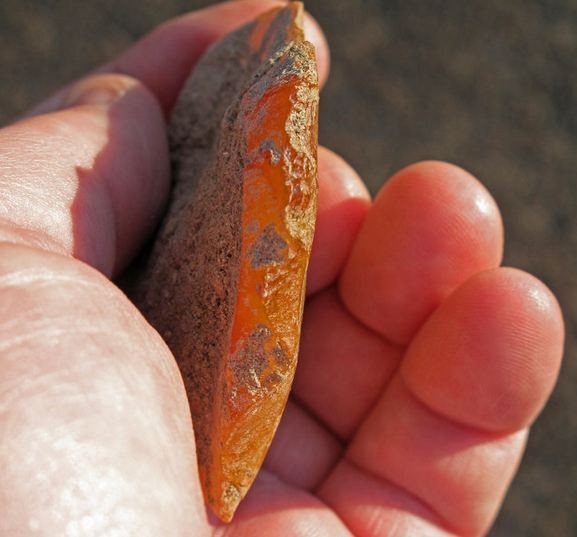A stone tool recently discovered in the high desert of eastern Oregon is raising new questions about when the first humans actually came to the United States.
Archaeologists from the University of Oregon discovered a single handheld scraper chipped from a piece of orange agate not usually found in eastern Oregon. The agate scraper was discovered 8 inches below a layer of volcanic ash from an eruption of Mount St. Helens 15,800 years ago. The depth was about 12 feet below the surface, said a story in U.S. News & World Report.
Archaeologists believe this scraper found at a dig in the Rimrock Draw Rockshelter near Riley, Oregon could date back to back 15,800 years, which will make it older than any known site of human occupation in the western U.S.
If tests are positive, the Rimrock site would be older than the Clovis culture that is generally believed to be the first people to migrate from Asia into North America, said Bureau of Land Management archaeologist Scott Thomas. The earliest Clovis artifacts date back to 13,000 years ago.
Confirmation of the Rimrock site's dating back to 15,800 years would mean people were in the U.S. about 1,500 years earlier than surmised. This would also mean these humans were here at the end of the Pleistocene Era when mastodons, mammoths and camels, among other animals roamed the area.
University of Oregon archaeologist Patrick O'Grady, who is supervising the dig, called the find "tantalizing," according to Fox News. He said his team intends to continue digging this summer.
The U.S. Bureau of Land Management announced the find March 5. Thomas, who found the site several years ago, said the find has hasn't been submitted to a scientific journal for publication.
Some archaeologists are skeptical the tool could be 15,800 years old. One of these skeptics, Donald Grayson, a professor of archaeology at the University of Washington, noted the scientific community would be skeptical "until it is shown there was no break in that ash layer".
"Until then, extreme skepticism is all they are going to get," he said.



























